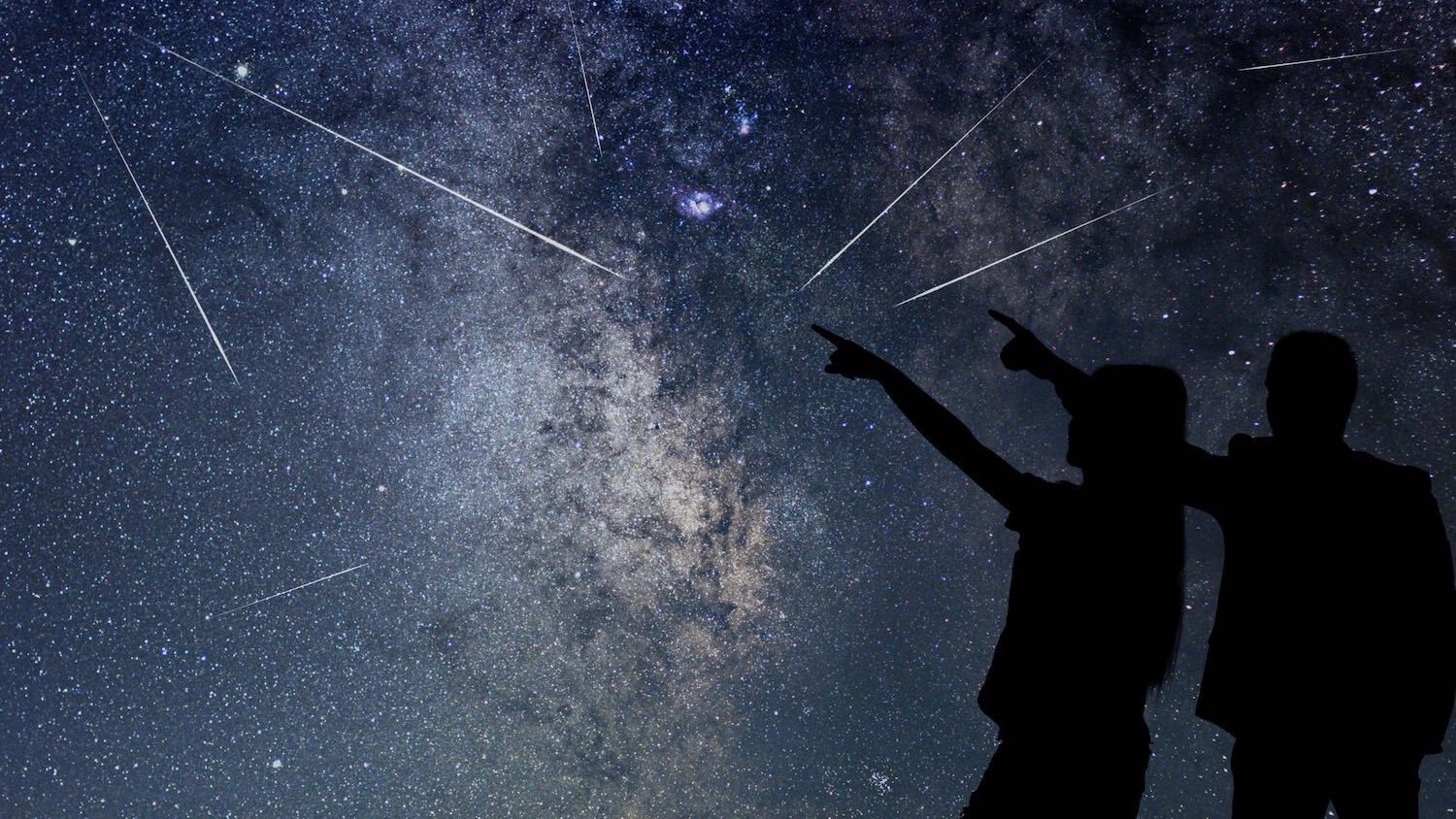23.04.2024

Stargazers who miss out on catching a glimpse of the ‘Devil Comet’ 12P/Pons-Brooks on the western horizon have a chance of seeing other regular night sky activity in April and May.
While the comet will be visible, it may only be a blurry, fleeting glimpse over the western horizon for those living in the southern hemisphere.
April marks the start of several meteor showers that occur throughout the middle part of the year, with the Lyrids peaking this week. It will be followed by the Eta Aquariids in early May.
The Perseids arrive in mid-August, followed by the Orionids in October and the Geminids in December.
Shooting star? Call me by my name
What has colloquially been termed a ‘shooting star’ couldn’t be further from the truth (and luckily, too, because a star burning up in our atmosphere wouldn’t bode well for anyone).
What appears to be stars falling from the black curtain of space are fragments of comet and asteroid rubble burning up in the Earth’s atmosphere as our planet spins through their path.
A meteor shower could happen at any time as comets and other small space bodies break apart and leave their debris in the path of Earth’s orbit. But some are annual meteor events, with our planet passing through a field of historic debris every year. The Perseids and Lyrids were first recorded by Chinese astronomers more than 2,000 years ago. There are dozens of meteor showers each year, but some are considered ‘major’ events with especially good viewing.
The Lyrids peak 22-23 April
Radiating near the star Vega in the constellation Lyra, the Lyrids peak tonight but will be difficult to see this week in the southern hemisphere with a waxing gibbous Moon phase reaching a full moon on April 24 (glare from a bright Moon can impair the best viewing of meteor showers).
To make matters worse Lyra will rise in the north after midnight and linger there till sunrise, so it might be worth staying in bed and waiting for one later in the year.
Named for: Lyra (constellation)
Radiant: near Kappa Lyrae (star)
Moon glare: Likely
Where to look: Above the north horizon

The Eta Aquariids peak on 6 May
Already underway but with a peak on May 6 and 7, the Eta Aquariids radiate from the star of the same name in the constellation Aquarius. It consists of fragments of Halley’s Comet which is in the process of making its U-Turn back towards Earth from beyond Neptune.
The challenge for Southern Hemisphere observers will be, again, the need to set alarms early. Aquarius will rise around midnight in the east and Eta Aquarii will appear from 1.30-2.00am, depending on where you are.
Named for: Eta Aquarii (star)
Radiant: Eta Aquarii in constellation Aquarius
Moon glare: Minimal
Where to look: Above the east horizon around 2.00am.
Hang around for the Delta Aquariids on 30 July
Less prolific than the Eta Aquariids, the Deltas radiate from a different star in the Aquarius constellation (with the unfortunate name ‘Skat’). Viewing will be best just after midnight, before the Moon rises.
Named for: Skat/Delta Aquarii (star)
Radiant: Delta Aquarii in constellation Aquarius
Moon glare: Minimal
Where to look: North, almost directly overhead until moon rise at 2.00am.

The Perseids peak 12-13 August
In August and one of the most popular meteor showers graces the skies. Bad luck if you’re in some parts of the Southern Hemisphere though, as time and place will determine your chances of spotting this shower associated with the Swift-Tuttle comet which revisits every 130 years.
Sadly for many parts of the Southern Hemisphere, the radiant near Eta Persei will only appear in the early hours of the morning. Places north of Brisbane and Alice Springs will have a better view than southern parts of Australia.
Named for: Perseus (constellation)
Radiant: Eta Persei in constellation Perseus
Moon glare: Minimal
Where to look: North for those closer to the equator around 4.00am until sunrise.

The Orionids peak 21-22 October…
And would normally be in the sweet spot for viewing, but with the waning gibbous Moon sitting next to the constellation Orion during the peak, viewing will certainly be sub-optimal.
Named for: Orion (constellation)
Radiant: Near Chi and Xi Orionis (the arm of Orion)
Moon glare: Minimal
Where to look: Almost directly overhead

The Geminids peak 14-15 December
The usually popular Geminids typically provide good viewing but again that pesky Moon will sit stubbornly close to the constellation Gemini. When the Moon sets in the early hours of the morning will be your best view, but keep your eyes locked to the radiant near the star Castor in the north-west to catch a few meteors before the sun comes up in the East.
Named for: Gemini (constellation)
Radiant: Near Castor (star)
Moon glare: Substantial until moon-set (just before sunrise).
Where to look: North-west horizon in the hour before sunrise.

